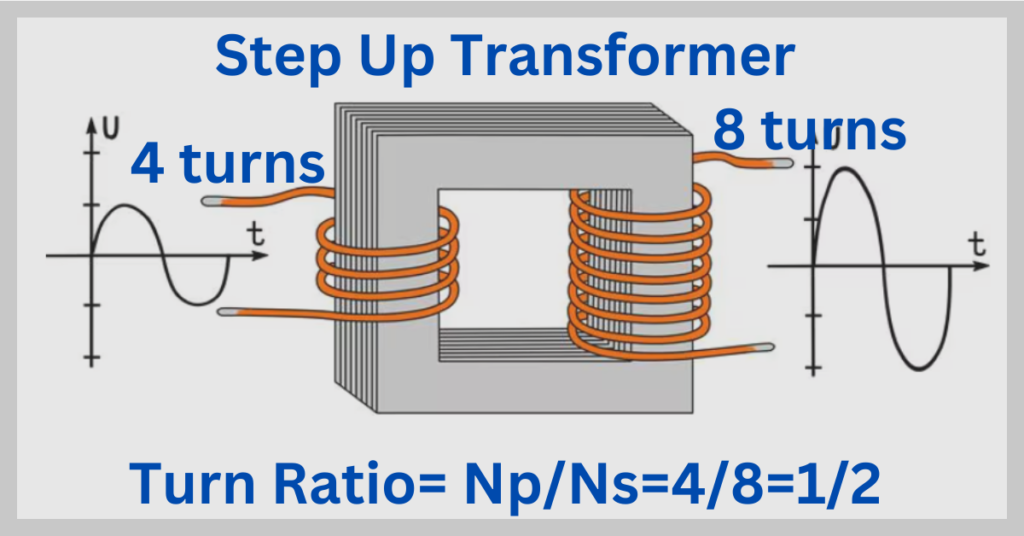Definition: A step-up transformer transforms the low voltage on the primary side to the high voltage on its secondary side. The current on the secondary side reduces in proportion to the increased voltage. Thus, the power at the primary and secondary sides remains the same. Also, the frequency of the primary and secondary sides remains the same.
Construction of Step-up Transformer
A transformer does not have moving parts; it has static primary and secondary winding and a magnetic core. Therefore, the transformer is a static piece of equipment. The transformer converts the electrical energy fed to its primary winding into magnetic energy. The magnetic energy links to the secondary winding, and voltage is induced in the secondary; thus, the magnetic energy converts into electrical energy. Step-up transformers are widely used to transmit bulk power at high voltage.

The step-up transformer has fewer turns in its primary than its secondary. The secondary voltage of the transformer depends on the transformer’s turn ratio (Np/Ns).
Features of Step-up Transformers
- The power at the incoming and outgoing sides of the step-up transformer remains the same. If the power on its primary side is 1 MW, then the output power at its secondary side will also be 1 MW.
- The frequency at the primary and secondary sides remains the same, and the step-up transformers do not change it.
- The step-up transformer’s secondary voltage (Vs) is higher than its primary voltage(VP). Vs>VP. If the primary voltage is 440 volts, the secondary voltage will be more than 440 volts, depending on the transformer’s turn ratio.
- The current at the secondary side decreases in the same proportion as the increased voltage. For example, if the primary voltage and current are 440 volts and 10 amperes, if we step up the voltage to 880 volts, the secondary current will be reduced to 1/2 X 10= 5 amperes.
- The step-up transformers, like other transformers, provide galvanic isolation.
- The transformer is capable of transferring power in both directions. Therefore, a step-up transformer can function as a step-down transformer if its secondary winding is used as a primary and its primary is used as a secondary. Thus, you can operate the transformer in step-up or step-down mode.
Step-up Transformer Equations
Primary Voltage

Secondary Voltage

Turn Ratio of The Transformer
When you divide primary turns with secondary turns, you get the transformer’s turn ratio. Thus, by dividing equation 1 by equation 2, we get.

The above equation shows that the step-up transformer’s turn ratio is always less than 1.

- The step-up transformer has more secondary turns for its HV winding.
- LV winding has fewer turns of a large cross-section area to handle higher currents.
- LV winding is placed near the core.
- The turn ratio of the step-up transformer is less than 1.
Step Up Transformer Applications
A step-up transformer is used to boost the low voltage to high voltage. The generating station generates a voltage of 6.6 kV or 11 kV. Now, if you need to transmit this voltage at a larger distance, there would be a greater voltage drop and higher copper losses because, at a lower voltage, the magnitude of the current is high. For example, if you transmit 11 kV, the power loss is 1 kW, and if you increase the voltage to 22 kV, then the current will reduce to half, and the power loss will become 1/4 th of 1kW= 250 watts.

At the generating station, the step-up transformer increases the voltage for a longer transmission distance. At the receiving end, the voltage is lowered to the utility level.